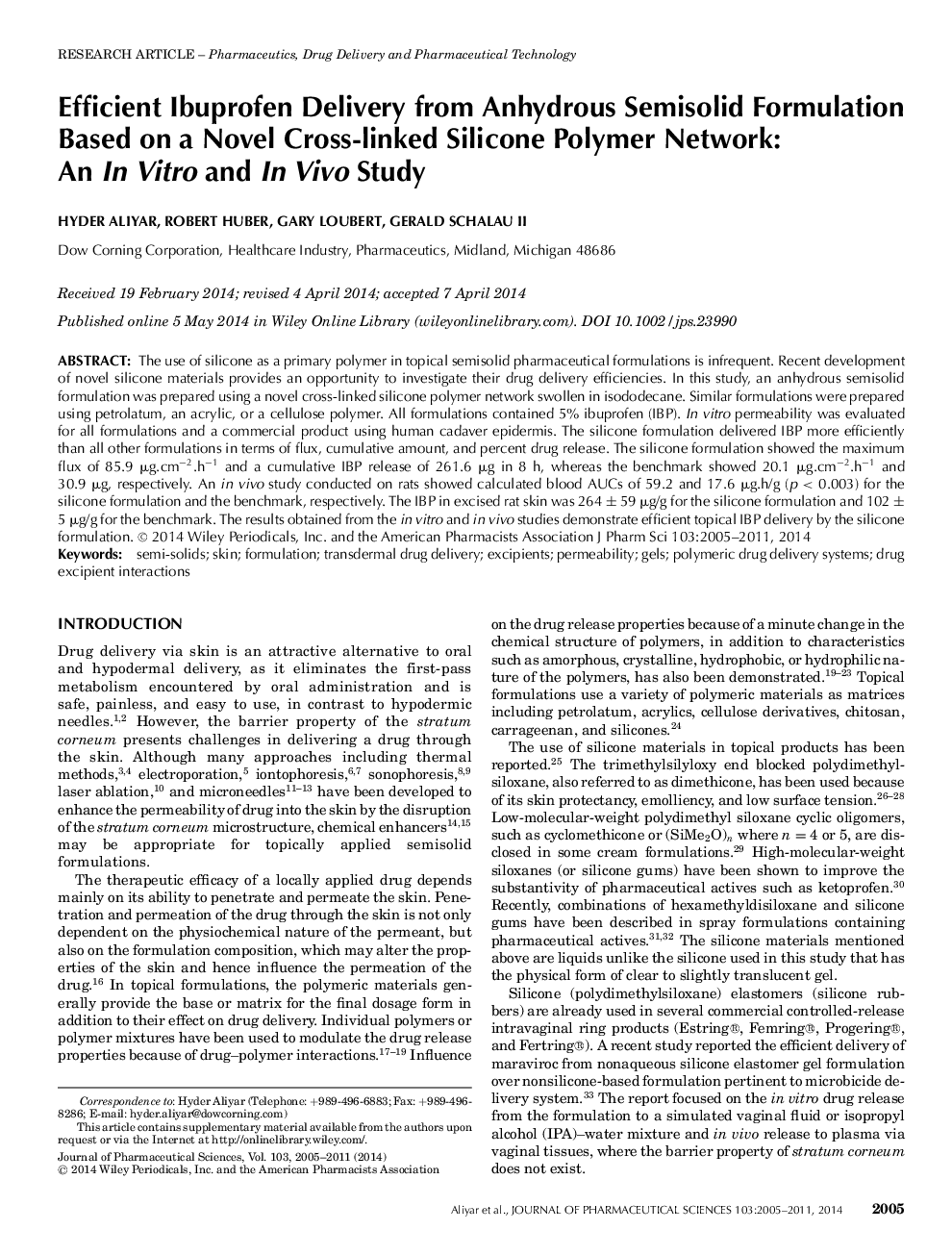| Article ID | Journal | Published Year | Pages | File Type |
|---|---|---|---|---|
| 10162448 | Journal of Pharmaceutical Sciences | 2011 | 7 Pages |
Abstract
The use of silicone as a primary polymer in topical semisolid pharmaceutical formulations is infrequent. Recent development of novel silicone materials provides an opportunity to investigate their drug delivery efficiencies. In this study, an anhydrous semisolid formulation was prepared using a novel cross-linked silicone polymer network swollen in isododecane. Similar formulations were prepared using petrolatum, an acrylic, or a cellulose polymer. All formulations contained 5% ibuprofen (IBP). In vitro permeability was evaluated for all formulations and a commercial product using human cadaver epidermis. The silicone formulation delivered IBP more efficiently than all other formulations in terms of flux, cumulative amount, and percent drug release. The silicone formulation showed the maximum flux of 85.9 μg.cmâ2.hâ1 and a cumulative IBP release of 261.6 μg in 8 h, whereas the benchmark showed 20.1 μg.cmâ2.hâ1 and 30.9 μg, respectively. An in vivo study conducted on rats showed calculated blood AUCs of 59.2 and 17.6 μg.h/g (p < 0.003) for the silicone formulation and the benchmark, respectively. The IBP in excised rat skin was 264 ± 59 μg/g for the silicone formulation and 102 ± 5 μg/g for the benchmark. The results obtained from the in vitro and in vivo studies demonstrate efficient topical IBP delivery by the silicone formulation.
Keywords
Related Topics
Health Sciences
Pharmacology, Toxicology and Pharmaceutical Science
Drug Discovery
Authors
Hyder Aliyar, Robert Huber, Gary Loubert, Gerald II.,
